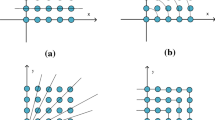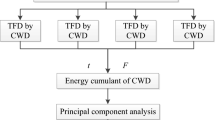Abstract
Radar Emitter Identification (REI) has been broadly used in military and civil fields. In this paper, a novel method is proposed for radar emitter signal identification, where the bispectrum estimation of radar signal is extracted and the recent hierarchical extreme learning machine (BS + H-ELM) is adopted for further feature learning and recognition. Conventional REI methods generally rely on the time-difference-of-arrival, carrier frequency, pulse width, pulse amplitude, direction-of-arrival, etc., for signal representation and recognition. However, the increasingly violent electronic confrontation and the emergence of new types of radar signals generally degrade the recognition performance. With this objective, we explore radar emitter signal representation and classification method with the high order spectrum and deep network based H-ELM. After extracting the bispectrum of radar signals, the sparse autoencoder (AE) in H-ELM is employed for feature learning. Simulations on four representative radar signals, namely, the continuous wave (CW), linear frequency modulation wave(LFM), nonlinear frequency modulation wave(NLFM) and binary phase shift keying wave (BPSK), are conducted for performance validation. In comparison to the existing multilayer ELM algorithm and the popular histogram of gradient (HOG) based feature extraction method are proved that the proposal is feasible and potentially applicable in real applications.








Similar content being viewed by others
References
Baldi P (2012) Autoeocnoders, unsupervised learning, and deep architectures. J Mach Learn Res 27:37–50
Cao J, Lin Z, Huang G, Liu N (2012) Voting based extreme learning machine. Inf Sci 185(1):66–77
Cao J, Chen T, Fan J (2016) Landmark recognition with compact BoW histogram and ensemble ELM. Multimedia Tools and Applications 75(5):2839–2857
Cao J, Hao J, Lai X, Vong C-M, Luo M (2016) Ensemble extreme learning machine and sparse representation classification algorithm. J Frankl Inst 353:4526–4541
Cao J, Zhang K, Luo M, Yin C, Lai X (2016) Extreme learining machine and adaptive sparse representation for image classification. Neural Netw 81:91–102
Chamara L, Zhou H, Huang G-B, Vong C-M (2013) Representational learning with extreme learning machine for big data. IEEE Intell Syst 28(6):31–34
Chen C, He M, Xu J (2014) A new method for sorting unknown radar emitter signal. Chin J Electron 23(3):499–502
Chutani S, Goyal A (2017) Improved universal quantitative steganalysis in spatial domain using ELM ensemble. Multimedia Tools and Applications. https://doi.org/10.1007/s11042-017-4656-3
Guo Q, Qu Z, Wang C (2010) Pulse-to-pulse periodic signal sorting features and feature extraction in radar emitter pulse sequences. J Syst Eng Electron 21(3):382–389
Guo G, Xu J, Xu W (2014) Research on radar emitter signal recognition based on QPSO. Journal of Air Force Warning Institute 28(3):161–164
Guo Q, Nan P, Zhang X (2015) Recognition of radar emitter signals based on SVD and AF main ridge slice. Commun Netw 17:491–497
Huang G, Chen L, Siew C-K (2006) Universal approximation using incremental constructive feedforward networks with random hidden nodes. IEEE Trans Neural Netw 17(4):879–892
Huang G-B, Zhou H, Ding X, Zhang R (2012) Extreme learning machine for regression and multiclass classification. IEEE Trans Syst Man Cybern B Cybern 42 (2):513–529
Jin W, Zhang G, Hu L (2006) Radar emitter signal recognition using wavelet packet transform and support vector machines. Journal of Southwest Jiaotong University 14(1):15–22
Jin Y, Cao J, Wang Y, Zhi R (2016) Ensemble based extreme learning machine for cross-modality face matching. Multimedia Tools and Applications 75(19):11831–11846
Kim L, Bae H, Kil R, Jo C (2016) Classification of the trained and untrained emitter types based on class probability output networks. Neurocomputing 248:67–75
Kishore T, Rao K (2017) Automatic intrapulse modulation classification of advanced LPI radar waveforms. IEEE Trans Aerosp Electron Syst 53:901–914
Li N (2012) Recognition of radar emitter sources based on bispectrum. Journal of Beijing Union University (Natural Sciences Edition) 26(2):26–33
Li J (2015) A novel recognition algorithm based on holder coefficient theory and interval gray relation classifier. KSII Trans Internet Inf Syst 9(11):4573–4584
Li L, Ji H (2011) Radar emitter recognition based on cyclostationary signatures and sequential iterative least-square estimation. Expert Syst Appl 38(3):2140–2147
Li Y, Ge J, Lin Y (2014) Radar emitter signal recognition based on multi-scale wavelet entropy and feature weighting. J Cent South Univ 21(11):4254–4260
Liang H, Han J (2014) Classification and sorting of radar signals using bispectrum multi-class wavelet packet features. Acta Photonica Sinica 43(4):1–8
Nan S, Sun L, Chen B, Lin Z, Toh K (2017) Density-dependent quantized least squares support vector machine for large data sets. IEEE Trans Neural Netw Learn Syst 28(1):94–106
Petrova N, Jordanova I, Roeb J (2013) Radar emitter signals recognition and classification with feedforward networks. In: International conference in knowledge based and intelligent information and engineering systems, pp 1192–1200
Ren M, Cai J, Zhu Y (2008) Radar emitter signal classification based on mutual information and fuzzy support vector machines. In: International conference on signal processing, pp 1641–1646
Shieh C, Lin C (2010) A vector neural network for emitter identification. IEEE Trans Antennas Propag 50(8):1120–1127
Tang J, Deng C, Huang G-B (2016) Extreme learning machine for multilayer perceptron. IEEE Trans Neural Netw Learn Syst 27(4):809–820
Wang H, Shen X (2009) A new radar emitter signal intra-pulse feature extraction method. J Syst Eng Electron 31(4):809–811
Wong C-M, Vong C-M, Wong P-K, Cao J (2018) Kernel-based multilayer extreme learning machines for representation learning. IEEE Trans Neural Netw Learn Syst 29(3):757–762
Yang C, Wu H, Li P (2013) Radiation source recognition algorithm based on cloud model and support vector machine. Modem Radar 35(10):41–44
Yong X, Zhang D, Wang S (2011) A new method of sorting radar emitter signals. Modern Defense Technology 39(3):148–151
Zhang Z, Guan X, He Y (2009) Study on radar emitter recognition signal based on rough sets and RBF neural network. In: International conference on machine learning and cybernetics, pp 1225–1230
Zhang Y, Zhao G, Sun J et al (2017) Smart pathological brain detection by synthetic minority oversampling technique, extreme learning machine, and Jaya algorithm. Multimedia Tools and Applications. https://doi.org/10.1007/s11042-017-5023-0
Zhu B, Jin W (2012) Feature extraction of radar emitter signal based on empirical mode decomposition. Lect Notes Electr Eng 154:716–723
Acknowledgments
This work was supported by the National Natural Science Foundation of China (61503104, 61502420), Hangzhou Smart City Research Center of Zhejiang/Zhejiang Smart City Regional Collaborative Innovation Center (GK150906299001/019), and the Natural Science Foundation of Zhejiang Province (LY16F020032).
Author information
Authors and Affiliations
Corresponding author
Rights and permissions
About this article
Cite this article
Cao, R., Cao, J., Mei, Jp. et al. Radar emitter identification with bispectrum and hierarchical extreme learning machine. Multimed Tools Appl 78, 28953–28970 (2019). https://doi.org/10.1007/s11042-018-6134-y
Received:
Revised:
Accepted:
Published:
Issue Date:
DOI: https://doi.org/10.1007/s11042-018-6134-y




